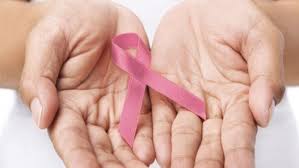Government Grants
Business Grants
Home Owner Programs
Federal Programs
About Us
Re-Entry Community Linkages (RE-LINK)
The mission of OMH is to improve the health of racial and ethnic minority populations through the development of health policies and programs to eliminate health disparities.
OMH serves as the focal point in HHS for leadership, policy development and coordination, service demonstrations, information exchange, coalition and partnership building, and related efforts to address the health needs of racial and ethnic minorities.The importance of providing support for formerly incarcerated individuals successful reentry to their communities as a critical tool in breaking the cycle of drug use and crime, providing a second chance, and improving the public health and public safety of our communities is widely recognized.
RE-LINK will demonstrate the effectiveness of multiple stakeholders working together to implement a model transition process.
Approximately 2. 2 million individuals are prisoners in the United States.
About 60 percent of U. S. prisoners are either African American or Latino.
In the United States, about one in every 35 African American men and one in every 88 Latino men is serving time, compared to one in 214 white men.
Studies show that approximately two-thirds of those formerly incarcerated will likely be rearrested within three years of release.
In addition, more than 80% of state prisoners, 72% of federal prisoners, and 82% of jail inmates meet the criteria for having either a mental or substance use issue.
Upon release from incarceration, transitional housing, or substance use disorder treatment programs, high-risk transitional populations may enter into a fragmented system that does not link them to appropriate health, behavioral health, social and supportive services, employment, mentoring and housing.
While there are currently some forms of extensive case management, navigation, and coordination services provided to reentry and transitional populations, the availability of such services varies by state.
Moreover, the referral and/or coordination services that are available may not be sufficiently intensive or comprehensive, due to severely limited community resources.
Decreased accessibility to the job market, lack of job skills, lack of a medical home, and limited community resources coupled with difficulty in navigating a complex health and social service system, further decreases the quality of life for individuals who are already disenfranchised.
OMH serves as the focal point in HHS for leadership, policy development and coordination, service demonstrations, information exchange, coalition and partnership building, and related efforts to address the health needs of racial and ethnic minorities.The importance of providing support for formerly incarcerated individuals successful reentry to their communities as a critical tool in breaking the cycle of drug use and crime, providing a second chance, and improving the public health and public safety of our communities is widely recognized.
RE-LINK will demonstrate the effectiveness of multiple stakeholders working together to implement a model transition process.
Approximately 2. 2 million individuals are prisoners in the United States.
About 60 percent of U. S. prisoners are either African American or Latino.
In the United States, about one in every 35 African American men and one in every 88 Latino men is serving time, compared to one in 214 white men.
Studies show that approximately two-thirds of those formerly incarcerated will likely be rearrested within three years of release.
In addition, more than 80% of state prisoners, 72% of federal prisoners, and 82% of jail inmates meet the criteria for having either a mental or substance use issue.
Upon release from incarceration, transitional housing, or substance use disorder treatment programs, high-risk transitional populations may enter into a fragmented system that does not link them to appropriate health, behavioral health, social and supportive services, employment, mentoring and housing.
While there are currently some forms of extensive case management, navigation, and coordination services provided to reentry and transitional populations, the availability of such services varies by state.
Moreover, the referral and/or coordination services that are available may not be sufficiently intensive or comprehensive, due to severely limited community resources.
Decreased accessibility to the job market, lack of job skills, lack of a medical home, and limited community resources coupled with difficulty in navigating a complex health and social service system, further decreases the quality of life for individuals who are already disenfranchised.
Related Programs
Community Programs to Improve Minority Health Grant Program
Department of Health and Human Services
Agency: Department of Health and Human Services
Office: Office of the Assistant Secretary for Health
Estimated Funding: $2,000,000
Office: Office of the Assistant Secretary for Health
Estimated Funding: $2,000,000
Obtain Full Opportunity Text:
Re-Entry Community Linkages (RE-LINK)
Additional Information of Eligibility:
The following entities are eligible to apply: State and local governments or their Bona Fide Agents (this includes the District of Columbia, the Commonwealth of Puerto Rico, the Virgin Islands, the Commonwealth of the Northern Mariana Islands, American Samoa, Guam, the Federated States of Micronesia, the Republic of the Marshall Islands, and the Republic of Palau);Nonprofit organizations with 501(c)(3) IRS status (other than institution of higher education);Nonprofit organizations without 501(c)(3) IRS status (other than institution of higher education);For-profit organizations (other than mall business); for profit organizations must agree to forgo any profit or management fee;Small, minority, and women-owned business;Universities;Colleges;Research institutions;Hospitals;Community-based organizations;Faith-based organizations;Federally recognized or state-recognized American Indian/Alaska Native tribal governments;American Indian/Alaska Native tribally designated organizations;Alaska Native health organizations;Urban Indian health organizations;Tribal epidemiology centers; and Political subdivisions of states (in consultation with states).
Full Opportunity Web Address:
https://www.grantsolutions.gov/gs/preaward/previewPublicAnnouncement.do?id=55702
Contact:
Grants.gov Contact CenterPhone Number: 1-800-518-4726Hours of operation are 24 hours a day, 7 days a week. The contact center is closed on federal holidays.support@grants.gov
Agency Email Description:
Grants.gov Customer Support
Agency Email:
support@grants.gov
Date Posted:
2016-02-18
Application Due Date:
2016-04-21
Archive Date:
2016-05-21
Social Entrepreneurship
Spotlight
Childcare Charitable Group Named Top Social Enterprise

Employers For Childcare Charitable Group (EFCG), a Lisburn-based charity, has been crowned top Social Enterprise at the Ulster Final of 2014’s Ulster Bank Business Achievers Awards. EFCG seeks to “make it easier for parents with dependent children to get into work and to stay in work.”

